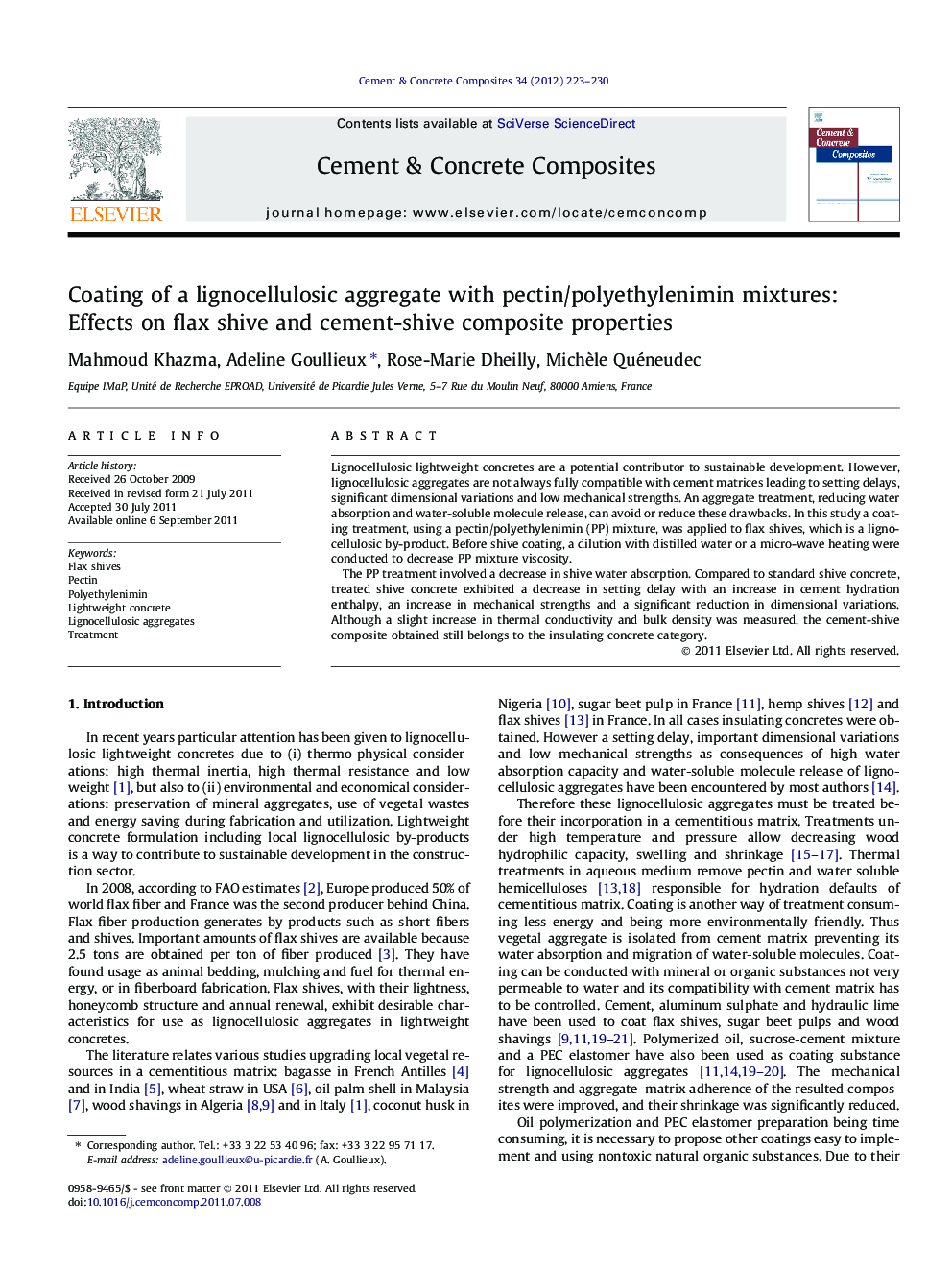| کد مقاله | کد نشریه | سال انتشار | مقاله انگلیسی | نسخه تمام متن |
|---|---|---|---|---|
| 1455116 | 989020 | 2012 | 8 صفحه PDF | دانلود رایگان |

Lignocellulosic lightweight concretes are a potential contributor to sustainable development. However, lignocellulosic aggregates are not always fully compatible with cement matrices leading to setting delays, significant dimensional variations and low mechanical strengths. An aggregate treatment, reducing water absorption and water-soluble molecule release, can avoid or reduce these drawbacks. In this study a coating treatment, using a pectin/polyethylenimin (PP) mixture, was applied to flax shives, which is a lignocellulosic by-product. Before shive coating, a dilution with distilled water or a micro-wave heating were conducted to decrease PP mixture viscosity.The PP treatment involved a decrease in shive water absorption. Compared to standard shive concrete, treated shive concrete exhibited a decrease in setting delay with an increase in cement hydration enthalpy, an increase in mechanical strengths and a significant reduction in dimensional variations. Although a slight increase in thermal conductivity and bulk density was measured, the cement-shive composite obtained still belongs to the insulating concrete category.
► Flax shives and cement matrices are not fully compatible.
► Incompatibility comes from shive water absorption and water-soluble molecule release.
► Hydrophobisation capacity of a pectin/polyethylenimin coating was tested.
► Coated shive use improved concrete mechanical strengths and dimensional variations.
► Economical low cost and implementation facility are coating competitive characters.
Journal: Cement and Concrete Composites - Volume 34, Issue 2, February 2012, Pages 223–230